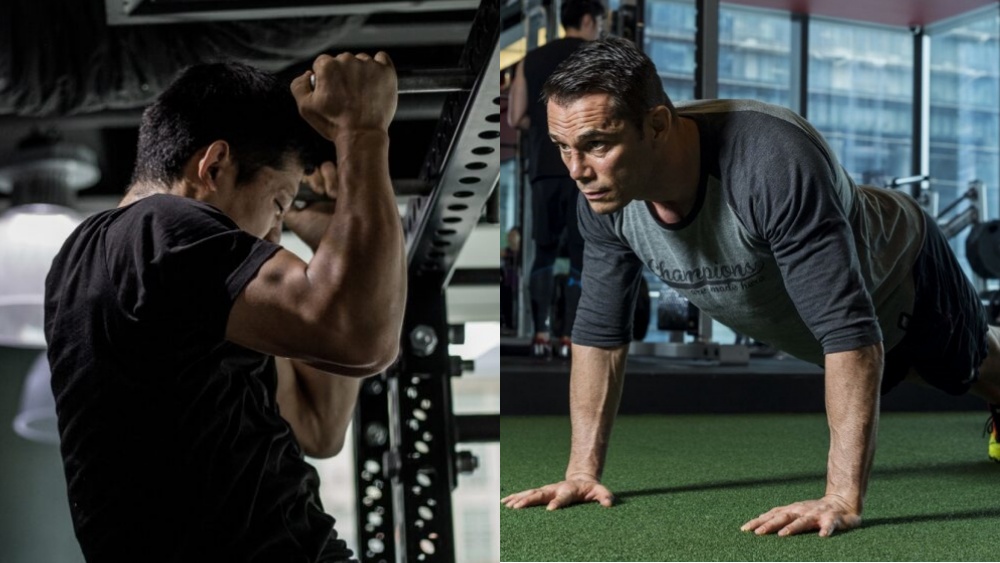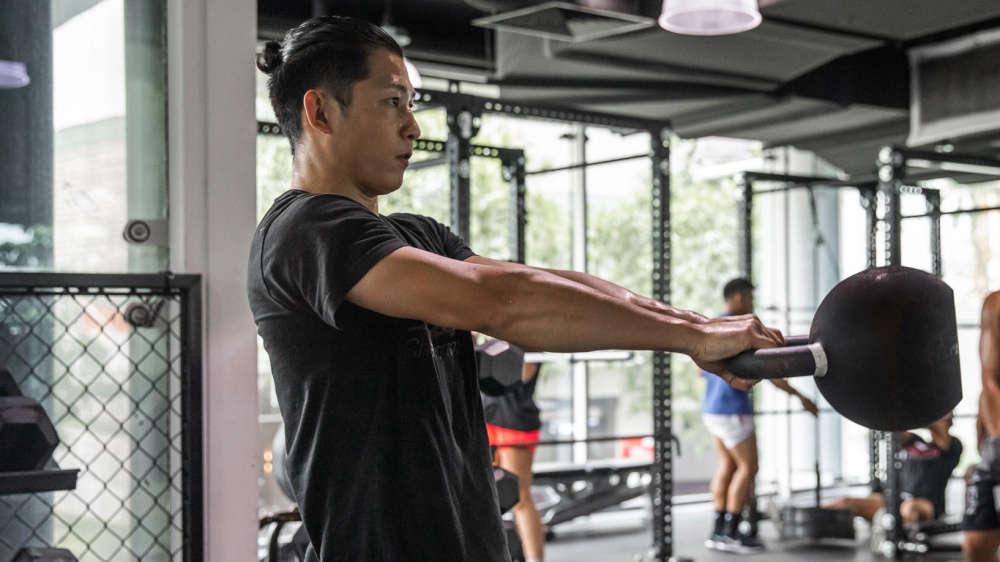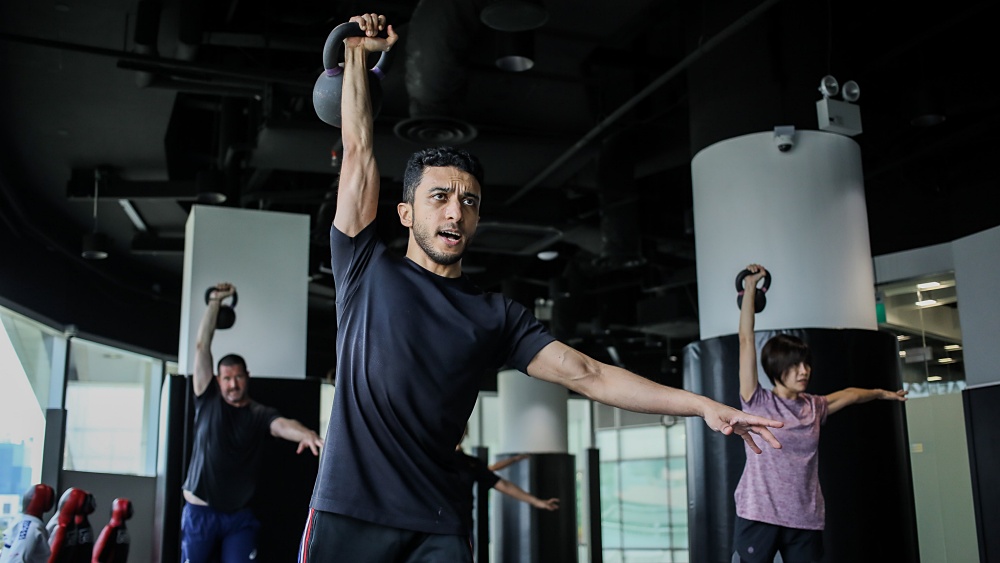Pull-ups and push-ups are two effective bodyweight exercises for your upper body. The former targets the large muscles in your back, shoulders, and triceps, while the former targets your chest, shoulders, and triceps.
These two exercises are effective when it comes to bodyweight exercises and improving muscle endurance. They’ve been around for millennia and are still two of the most popular bodyweight exercises. From military agencies to professional athletes, push-ups and pull-ups are often included in any advanced fitness program.
Knowing how to breathe correctly while performing pull-ups or push-ups allows you to get more reps during your workouts, so you get more out of your workouts.
Proper Breathing Techniques From Push-Ups And Pull-Ups
Proper breathing techniques aren’t only needed for push-ups and pull-ups. You should always focus on your breathing when performing any strenuous physical exercise. Many people have a terrible habit of holding their breaths as they pump out their reps. That reduces the effectiveness of their workouts since it limits the number of reps they can get since muscles need oxygen to contract. Depriving your muscles of the oxygen they need leads to premature fatigue.
Failing to breathe while performing exercises like push-ups and pull-ups denies your brain the oxygen it needs. This can lead to dizziness or even passing out during workouts. For example, deadlifts are notorious for causing blackouts since the exercise works most of the large muscles in the body, and barbells can be easily loaded with heavy weights. Inexperienced lifters often forget to breathe when performing deadlifts, leading to dizziness and blackouts.
In rare cases, failing to breathe when exercising can even lead to strokes as the brain struggles to get the oxygen it needs to function.
Ready to learn how to get more out of your push-ups and pull-ups by breathing correctly? Let’s take a look at both exercises to get a clearer understanding of how to manage your breathing when performing them.
1) Push-Ups
Push-ups help to build your core and upper body strength. Many variations can be used to make the movement easier or increase its difficulty.
Push-ups are a compound exercise that targets multiple muscles like the delts, chest, abs, erector spinae, and triceps. The functional strength you gain from performing push-ups comes in handy in daily life whenever you have to push on an object like a shopping cart or door.
Research shows that push-ups are also great for your cardiovascular health, especially when you add them to your cardio circuits. Studies show that people who can perform 40 or more push-ups at a go are less likely to have cardiovascular disease events like heart attacks or stroke than those who can’t perform up to ten push-ups.
Push-ups can be part of your bodyweight exercise session, warm-ups, circuits, or strength workouts.
Here’s what the most common variation of push-ups looks like:
- Get into a high-plank position with your arm a little more than shoulder-width apart and your legs extended. You can perform the exercise on your knees if you find the common variation too challenging. Keep your elbows slightly bent to avoid locking out your shoulders.
- Contract your abs by pulling your belly button towards your spine as you inhale with your belly. Lower yourself to the ground until your elbows are bent at a 90-degree angle.
- Contract your chest muscles as you exhale and push yourself back to the starting position. Keep your body straight and your core tight as you perform the exercise. Looking a few feet ahead of you helps to keep your body straight.
- Inhale as you start each rep and exhale when you have to contract your muscles. Focus on doing this on every rep until it becomes part of your muscle memory.
2) Pull-Ups
Pull-ups target muscles in your upper body, like your back, shoulders, and arms. The exercise involves pulling your body up with your arms and back while keeping your back straight. They are one of the more challenging bodyweight exercises to master since many people struggle to perform more than a few when first starting out.
Give chin-ups a try if you find pull-ups to be too challenging. Chin-ups force your arms to do more work, while pull-ups force muscles in your back to do most of the heavy lifting. The difference between the two exercises is the distance between your hands and the position your palm faces.
Pull-ups are performed with an overhand grip and your palms facing away from you. Your hands are placed a little more than shoulder-width apart. Chin-ups involve grabbing the bar with an underhand grip, so your palms face you and bringing your hands closer together.
To perform a pull-up:
- Get into a dead-hang position with your arms a bit more than shoulder-width apart and your palms facing toward you. Your arms should be fully extended, and your feet should be off the floor. Take a deep breath and fill your lungs up with air.
- Exhale as your start pulling yourself toward the bar. Keep exhaling until you’ve pulled your chin over the bar.
- Take another deep breath as you lower yourself back to a dead-hang position. Exhale as you pull yourself towards the bar and keep repeating the breathing pattern as you pump out your reps. Taking these deep breaths will give your muscles all the oxygen they need to create energy for your reps. As a result, you get a more thorough workout.
Proper Breathing Should Be Part Of All Your Workouts
Proper breathing techniques should be part of all your workouts and any physically strenuous activities you engage in. Failing to do so prevents your muscles from getting the oxygen they need to convert glucose into energy. This energy is stored as adenosine triphosphate (ATP) and used as needed.
You get tired faster than you should when your muscles aren’t getting enough oxygen to produce the energy needed. Your workouts become less efficient, and you also expose yourself to issues like chronic headaches, excess stress on the body, rapid changes in blood pressure, and even strokes.
You may also like:


















